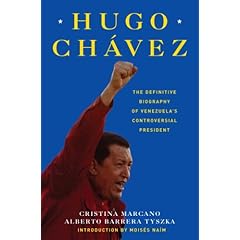 When withholding the toilet paper is a campaign tactic, it is pretty clear the politics is floating around in the cesspool. Venezuela is a hotbed of intrigue as Hugo Chavez tries to garner more power and
When withholding the toilet paper is a campaign tactic, it is pretty clear the politics is floating around in the cesspool. Venezuela is a hotbed of intrigue as Hugo Chavez tries to garner more power and  students are in open opposition marching in the streets. Everybody has to go to the bathroom, so the Venezuelan government holding the TP hostage is backing up everything. It's the new way of winning an election, vote for the Chavez government and then you get toilet paper - in more ways than one.
students are in open opposition marching in the streets. Everybody has to go to the bathroom, so the Venezuelan government holding the TP hostage is backing up everything. It's the new way of winning an election, vote for the Chavez government and then you get toilet paper - in more ways than one.Markets have a diminished amount of toilet paper and what's left is being hoarded. Hugo Chavez is not running away with the election and the margin of victory may just be as thin as toilet tissue. His extraconstitutional measures and economic manipulations are showing signs of constipation which relieves his immediate need for the scare toilet paper. Chavez's supporters, in and out of Venezuela's National Assembly, are out in numbers as well praising his reform package.(photo courtesy AP/Howard Yanes)Venezuelans have been buying large amounts of toilet paper on rumours it could be the next hard-to-find thing amid shortages of products like milk and meat that businesses attribute to price controls but the government blames on high demand and hoarding.
"We know there are sectors that are hiding toilet paper," Finance Minister Rodrigo Cabezas told state television on Friday. "A group of business leaders are playing mean, playing dirty ... of course trying to create the sensation of product shortage during the elections."
Mr Chavez proposed 33 changes, and the National Assembly, which is composed of his supporters, put forward a further 36 amendments.Mr Chavez has said he is prepared to serve for life as long as the people want it. Under the current constitution, he would have to stand down when his term expires at the end of 2012.
Other changes up for approval include giving the president control over the central bank, the creation of new provinces governed by centrally-appointed officials, and a reduction in the voting age from 18 to 16.
There are also proposals to expand presidential powers during natural disasters or political "emergencies".
Hugo Chavez and Pervez Musharraf keep tee peeing the organizing principles and tenants of Democracy. Like Bush, Chavez even says your either with us with a Yes vote or against us with a No vote. Wipe, er vote, carefully in Venezuela.

Eco-friendly architect and author Sim Van Der Ryn describes the trials and travails of bathroom paper products in The Toilet Papers: Recycling Waste and Conserving Water. It is becoming an even more important topic in Venezuela before the 2 December, 2007 vote.























































